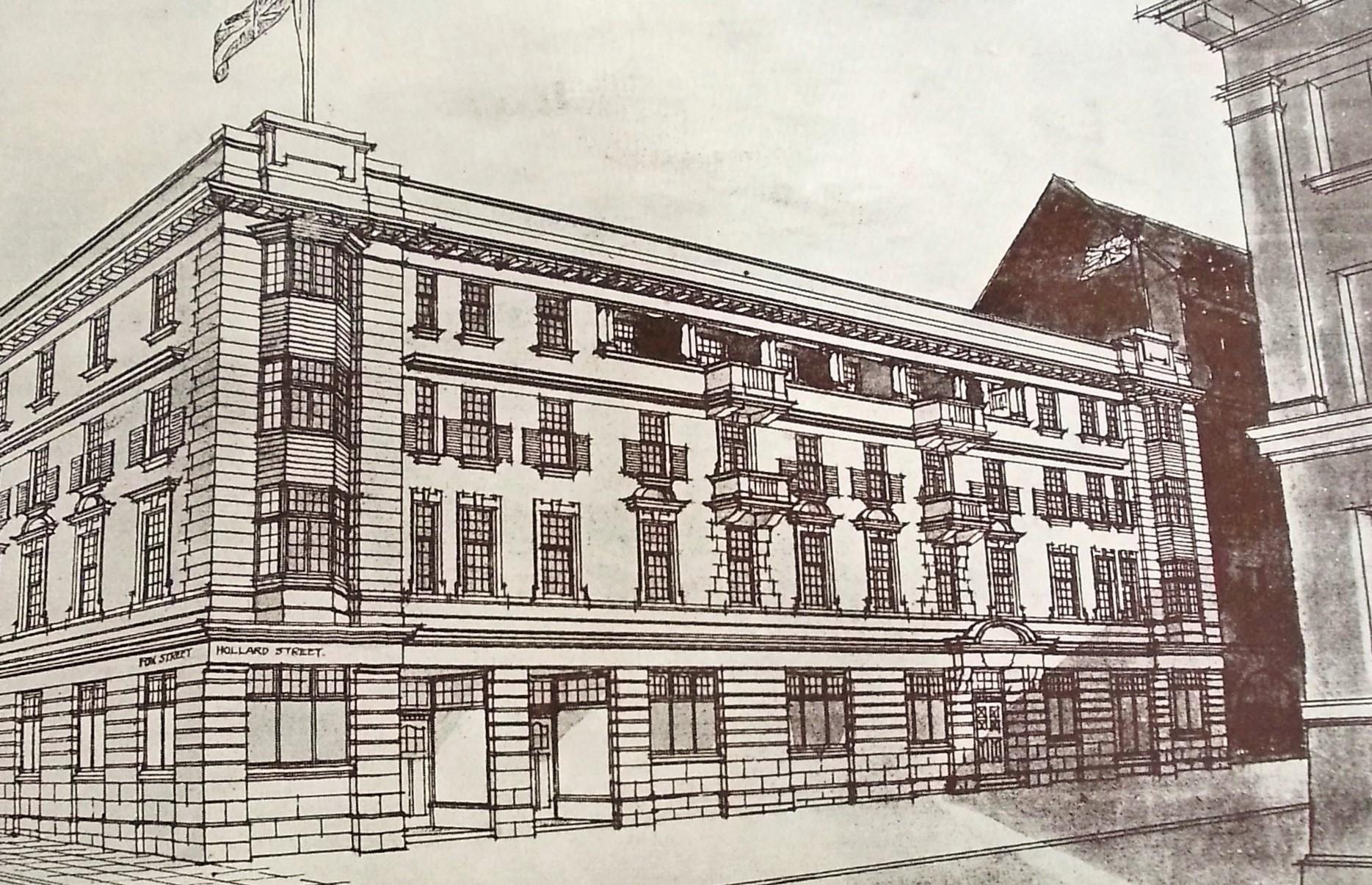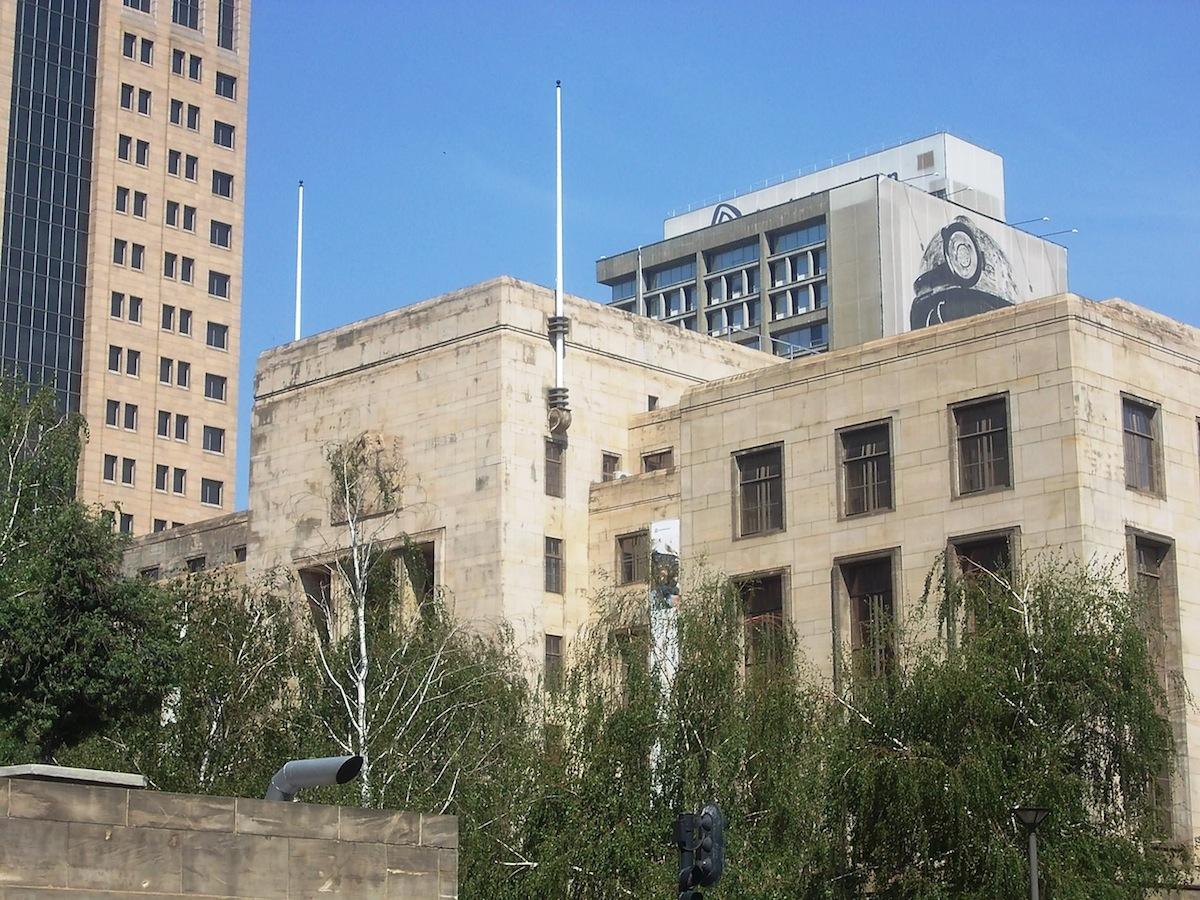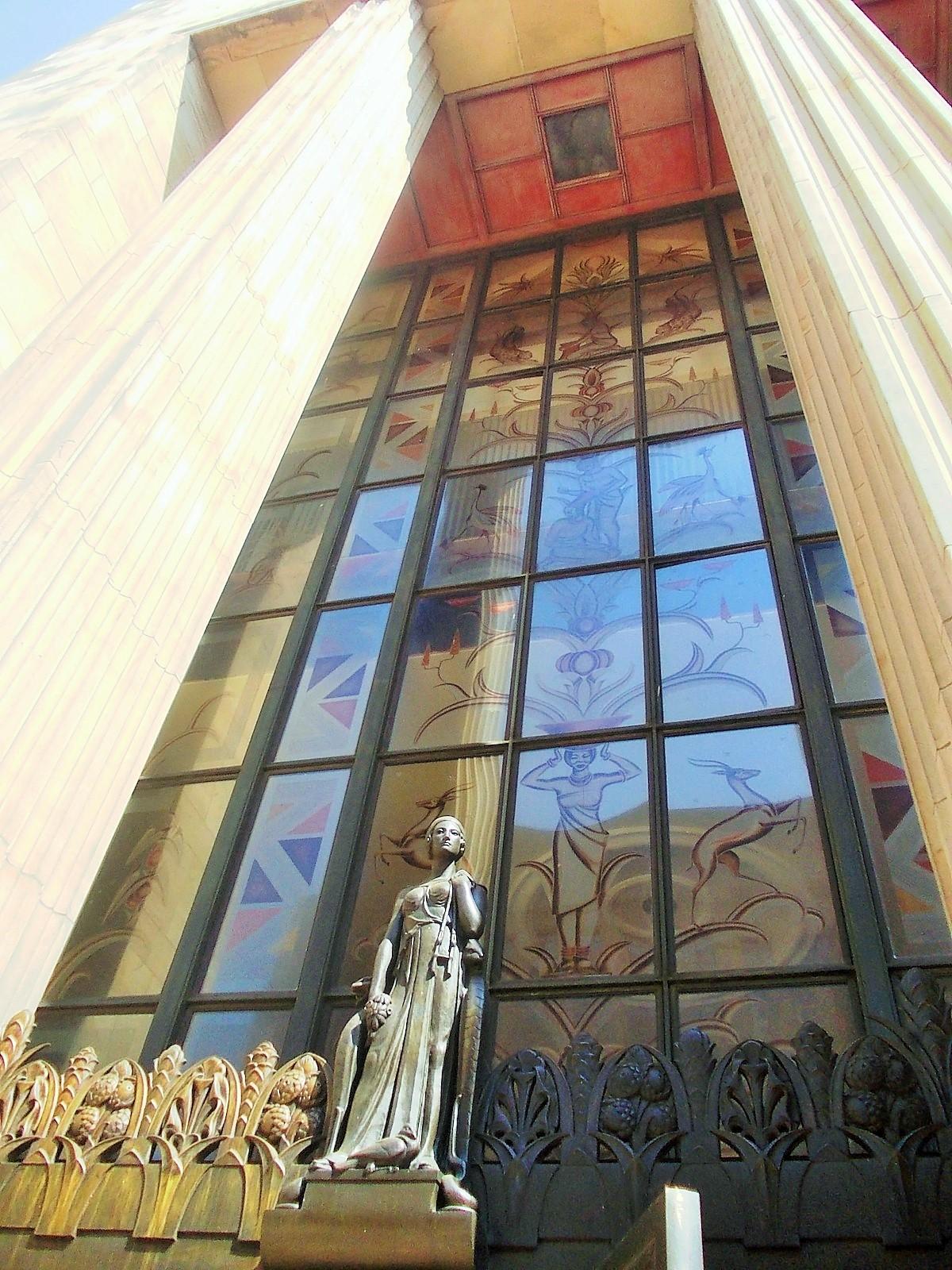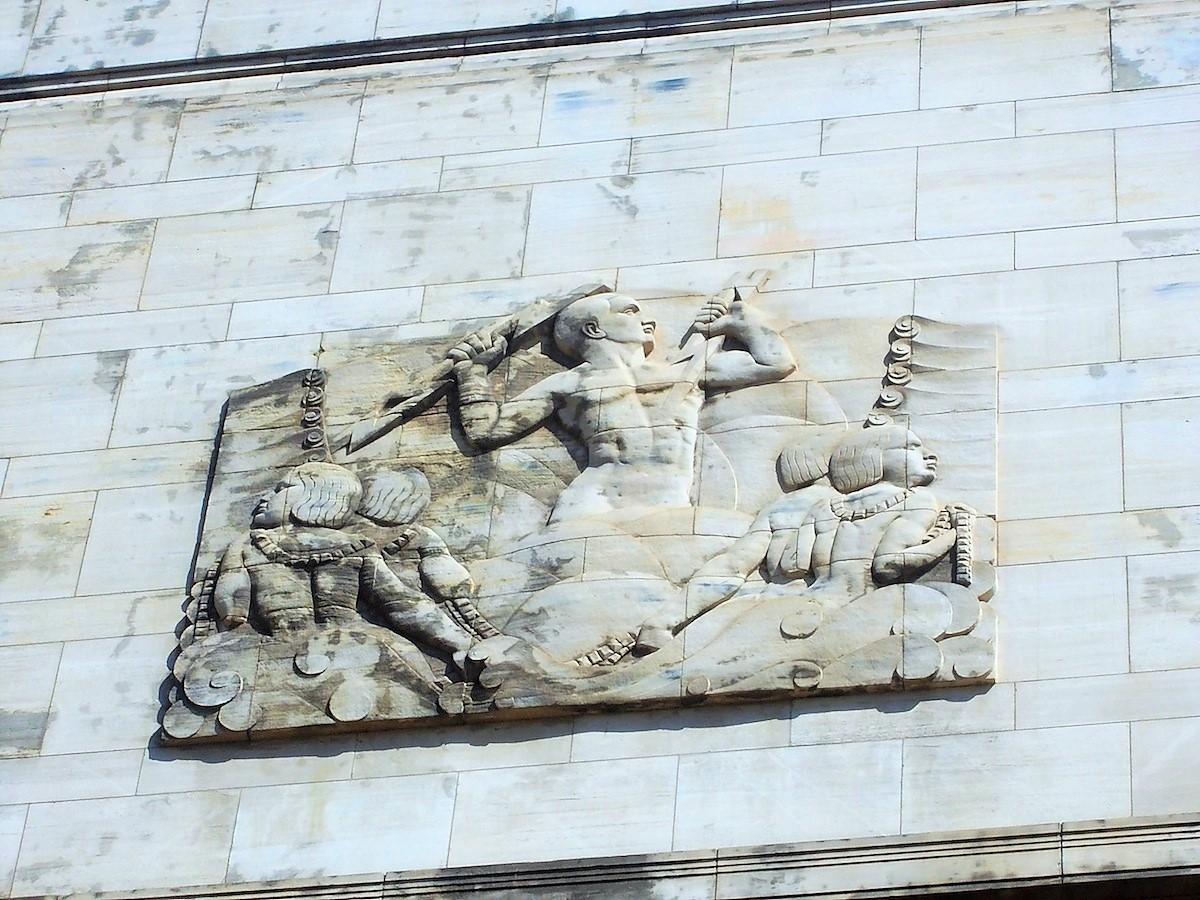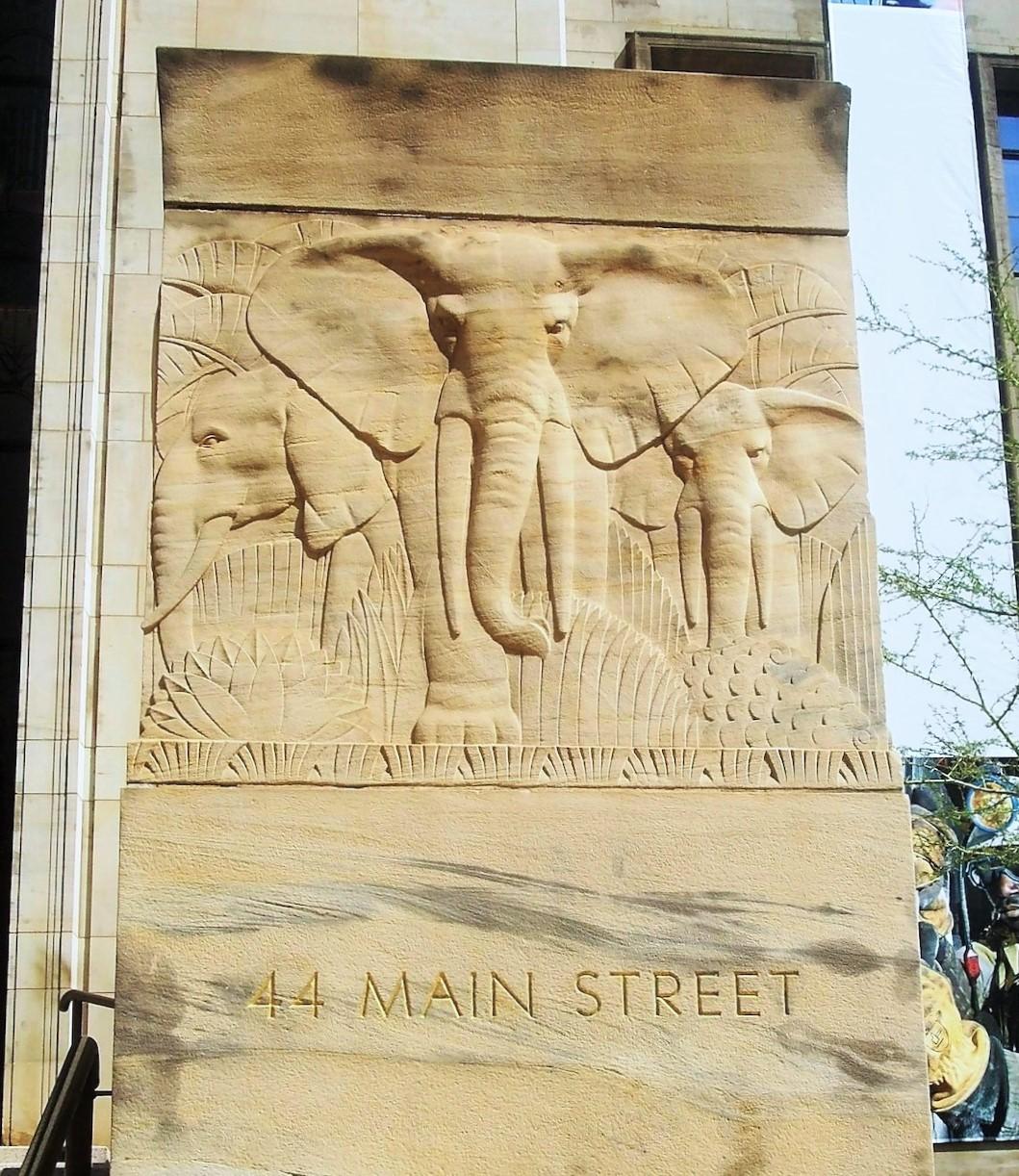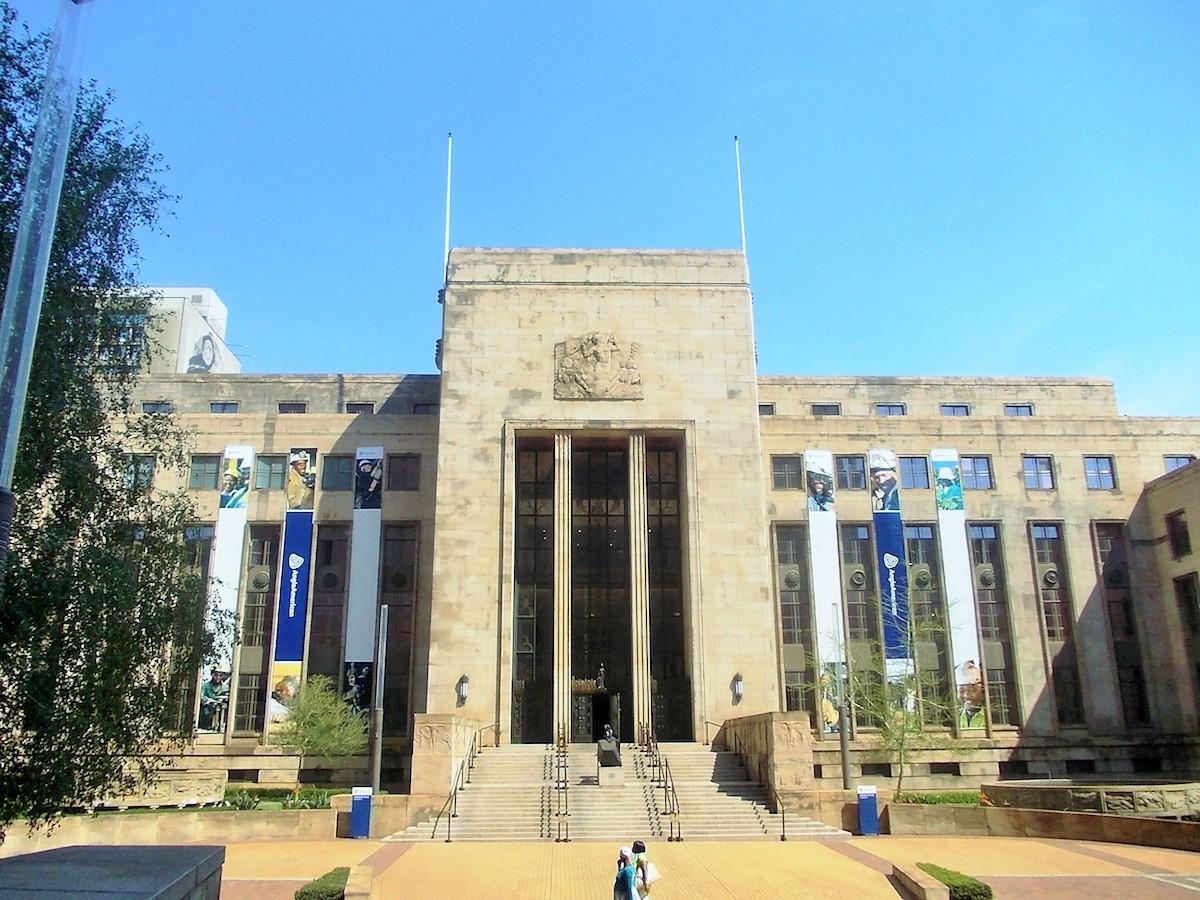
Disclaimer: Any views expressed by individuals and organisations are their own and do not in any way represent the views of The Heritage Portal. If you find any mistakes or historical inaccuracies, please contact the editor.
To the west of Marshalltown along Main Street in Johannesburg lies the Anglo American Precinct. Anglo was one of the companies that remained committed to the inner city during the flight to the north in the mid to late 1990s. With a remarkable set of buildings telling the history of the company, city and country we understand why! The jewel in the crown is certainly 44 Main Street which was a landmark in its time and remains so today. The wonderful piece below appeared in the Anglo publication 44 News in the early 1980s.
When the staff of Anglo American, then some 200 strong, moved at the end of 1939 from the cramped quarters in Anmercosa House, Hollard Street, to their new quarters at 44 Main Street, the building was described as "quiet, dignified and monumental in design". The Sunday Times, Johannesburg, said it set "a new trend in commercial architecture in South Africa".
Anmercosa House (SA Builder)
The decision to construct the building was taken in 1935, with a number of certain basic principles laid down as to what form it would take. The first of these was that an entire city block should be acquired, so that the new building could occupy a site by itself and not be cramped by neighbouring buildings. The second was that the new buildings should be, as we have said, "quiet, dignified and monumental in design". Thirdly, the building had to be large enough to accommodate present staff of the Corporation, as well as to allow for future expansion. (Staff, however, are now spread through 10 buildings in the area).
Quiet, dignified and monumental
The present site is one of the original claims where gold was first found on the Rand some 100 years ago, and the remains of the original diggings were found on the site. The firm of Sir John Burnet, Tait and Lorne of London was chosen in 1937 by the directors to design the building and building operations started in January 1938. These were carried out by James Thompson (Pty) Ltd, of Johannesburg, which was later to become part of the LTA group.
The building is of steel and concrete frame construction throughout, sitting on a foundation of shale rock common to the Rand. It is faced with Ficksburg freestone. The building is set back on all four frontages a minimum of 6m from the boundary. The design of the building was deliberately such that every office would look out on the grass, flowers and shrubs.
The architects described the building as "simple and monumental in design, entirely without mannerisms of any sort and therefore will not become dated. It belongs to no particular school of design and may be said to be a simple treatment of modern requirements on classical principles."
The bronze decorative work on the doors and windows was executed by Walter Gilbert, a well-known British sculptor. The plaster models for stone carving were by his son, Donald Gilbert. The etched and coloured glass window in the main entrance hall was executed by Jan Juta, a South African whose work earned him an international reputation.
The effect of the main window was achieved by acid washes, wheel-cutting and carefully applied vitrifiable colour of sienna and amber fired into the glass blend with the bronze metal frame surrounding it.
The Main Window
Dr Peter Kirchoff translated the sculptured panels of Donald Gilbert into the stonework of the building and the four fountains. The ornament used for decoration for the building that of birds, animals and plants of South Africa, was used to remind South Africans of their good fortune and choice possessions.
The line governing the design of the large stone bas-relief on the tower front over the main entrance is shaped as the South African continent thrusting out into the southern seas. The male figure in the centre of the scheme searching upwards and pulling the lightning from the skies symbolises the human energy which breaks ground with electric power to get the treasures concealed therein. These are then conveyed across the ocean to all parts of the world symbolised by the sea nymphs.
The large stone bas-relief on the tower front over the main entrance
The stone bas-relief on the back of the tower in Marshall Street depicts Mercury, the messenger of the gods, hurling himself through the clouds with a message from the Old World to those doing business in this building in the New World, symbolising the spread of modern communication.
The most important position of the bas-relief sculptured friezes on the pylons flanking the steps to the main entrance depict the African elephant, warthog, Cape Hartebeest, kudu, giraffe, black rhinoceros, heron, vulture and various smaller birds, eland, quagga, sable antelope, antbear, springbok, baboon and bushbuck.
One of the bas-relief sculptured friezes on the pylons flanking the steps
The decorative metal work on the windows includes bosses formed in the shape of the giant protea, blooms of the coral tree, bird of paradise flower, head of the white tailed wildebeest, and the head of the springbok, set on a shape depicting the South African sun.
The decorative bronze at the principal entrance doors in Main Street includes emblems of the sun, symbol of South Africa's prosperity and wealth, the eland and giant sable antelope, symbols of her great possessions, the storks and the swallows, flying outwards symbolising her trade with the other parts of the world are also depicted. Various flora from South Africa are used to ornament the doors as well. The handles to the doors are symbols of power and beauty, shown by the eagle.
Comments will load below. If for any reason none appear click here for some troubleshooting tips. If you would like to post a comment and need instructions click here.

